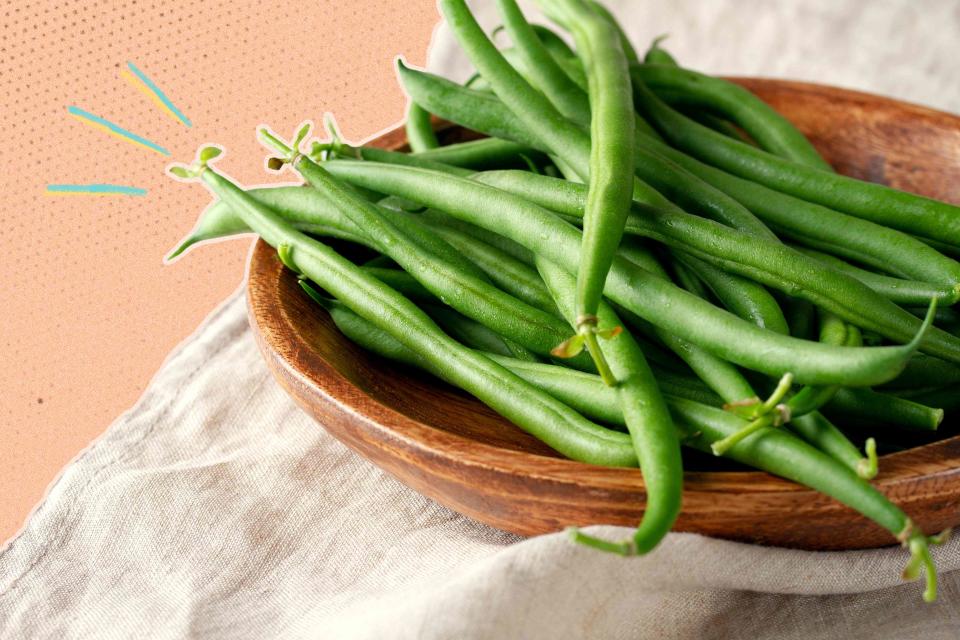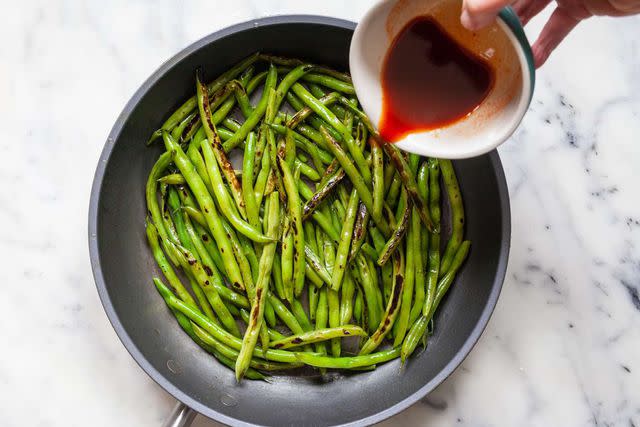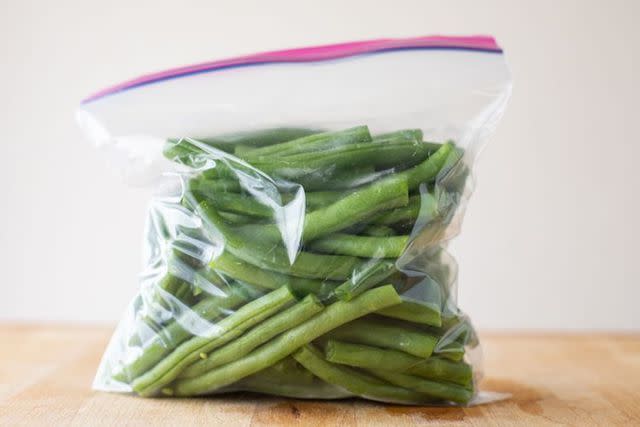Never Buy Fresh Green Beans From This Part of the Grocery Store
According to the experts, it all starts with where you find them at the grocery store.

Simply Recipes / Photo Illustration by Wanda Abraham / Getty Images
I love all the potential a bag of fresh green beans has to offer. They’re so bright and crunchy and have promise in an array of dishes—they’re delicious as a standalone side and just as good incorporated raw into a salad or stir-fried at high heat.
It’s so disappointing when you open the crisper drawer and the beans are soft and slimy. Which, of course, makes me wonder: How do you keep them to stay fresh?

Simply Recipes / Alison Bickel
How to Spot Bad Green Beans
As beans start to spoil, you may see brown spots or notice that they feel soft and slimy. They can feel limp and might have a sour, rotten smell.
Moisture is usually the biggest threat to green bean freshness. “When moisture is present for an extended period, bacteria grows causing beans to spoil,” says Melanie Marcus, a chef and registered dietitian from the greater Charlotte area. “Ideally, when stored consistently between 40°F and 45°F after picking, you can expect beans to last eight to 12 days.”
But it’s a delicate balance. If your beans don’t get enough moisture, they can also shrivel up and dry out.

Simply Recipes / Sally Vargas
The Best Ways to Keep Green Beans Fresh
It begins at the supermarket. When you shop, make sure you choose the freshest produce. “Start with super fresh beans. It’s even better if you can pick them yourself from the plant or from a refrigerated bin,” says Marcus. Beans found in the middle of the produce section without refrigeration or ice will go bad much faster than those being held in a refrigerated area.
“Fresh beans are firm, have bright green in color, and will snap when you break them,” says Marcus. Don’t pick beans that are wilted or spotted and avoid those that are somewhat split open or over-sized. “Beans with pods larger than a pencil or bulging seeds should be avoided since these indicate over-maturity and generally have a fibrous and tough texture.”
Once your beans are home, don’t wash them until you’re ready to eat. Washing adds moisture, which can cause them to spoil faster and can encourage bacteria growth.
Store beans in a veggie crisper or an air-tight plastic container. You can keep them in the plastic bag they came in from the store, but condensation may develop and speed up spoilage. To prevent this, place a paper towel in the bag or container to absorb extra moisture, and replace it as it gets damp.
Keep green beans away from fruits and vegetables like apples, peaches, and avocados, which produce ethylene. Ethylene is a gas that can cause some other produce to ripen more quickly. In the case of green beans, they’ll lose their color and brown more quickly.
Can You Eat Iffy Green Beans?
Always discard any that smell foul or that are very wet and slimy. If your beans have a few brown spots, they are OK to consume. Just cut off the brown areas before cooking and eating. Just know that these slightly past-their-prime beans may not have the flavor, texture, or nutritional benefits of perfectly fresh beans.

Simply Recipes / Lori Rice
Saving and Freezing Extra Green Beans
If you have more green beans than you know you’ll eat in the next few days, freeze them, as suggested by registered dietician Caroline Susie, spokesperson for the Academy of Nutrition and Dietetics.
“Freezing green beans will hold their taste and texture. You will want to wash, trim, then blanch,” she says. “You can freeze raw green beans, but there is a chance they will not be as fresh or might become mushy. Blanching prevents this.”
To blanch, rinse and drain the beans, then trim the stems and cut them into pieces. Boil the beans for about three minutes in a pot of boiling water, then drain and place them in a bowl of ice water for three minutes. Dry well on a dish towel or paper towels.
“Pro tip: quick freeze first!” says Susie who insists the extra step is worth it. “To avoid clumping, after you dry beans from the ice bath, place beans in a single layer on a baking dish and freeze for an hour before placing them in storage bags to freeze long-term.”
You can pop frozen beans directly into a soup, stew, or casserole or sauté or steam them quickly as a tasty, healthy side.

